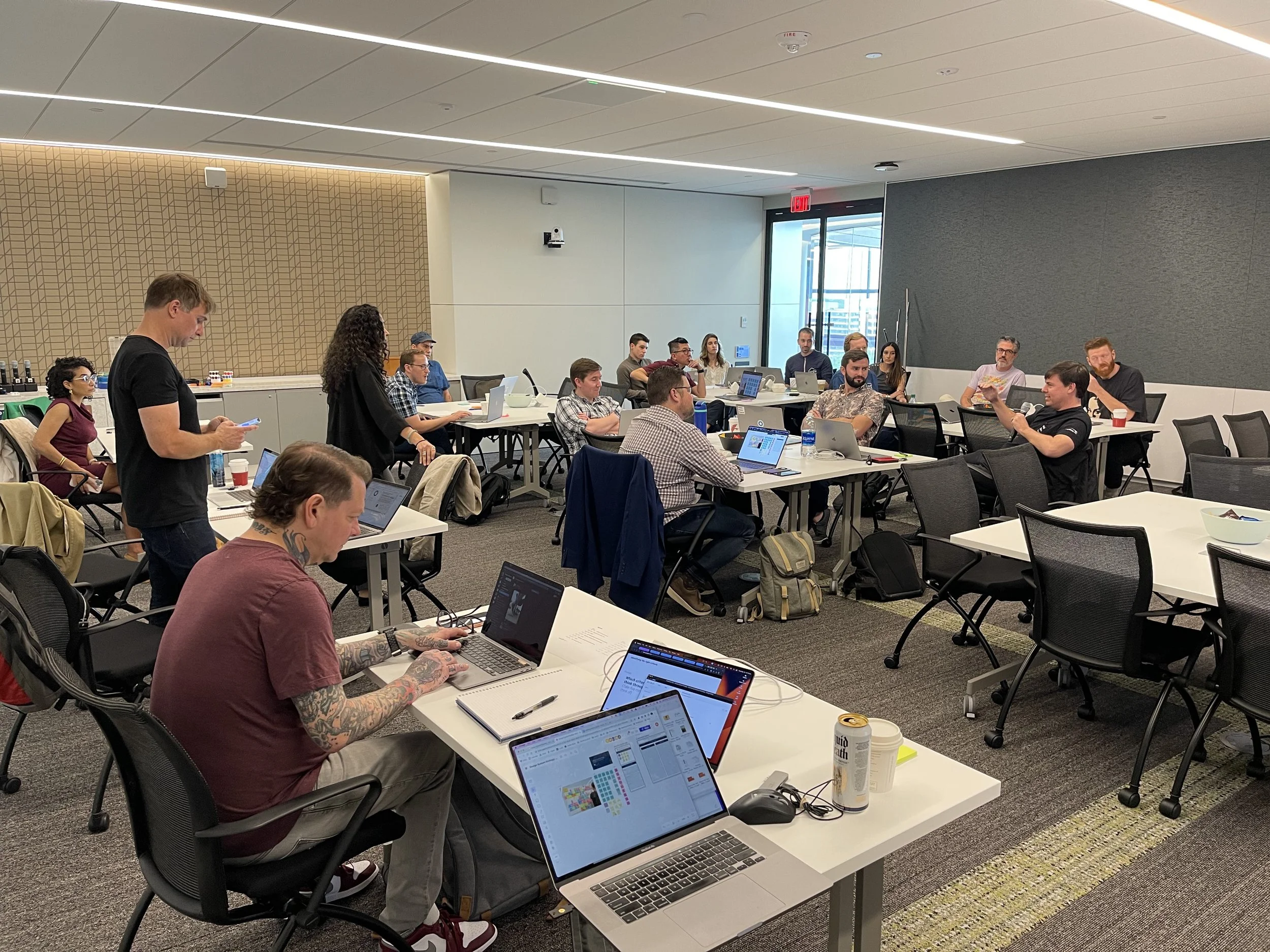Building a Unified Enterprise Design System at Capital One
Role: Director, Lead Advisory Group
Duration: March 2023 - June 2023
In 2023, Capital One set out to unify its fragmented design systems into a centralized enterprise-wide strategy. Despite the presence of Gravity, the organization’s declared central platform, inconsistent adoption led to inefficiencies, redundant work, and disjointed user experiences. My role as a lead in the advisory group was critical in aligning stakeholders, fostering collaboration, and laying a strategic foundation for long-term success.
This initiative tackled immediate challenges while setting the stage for operational efficiency, consistent user experiences, and scalable design practices
Capital One’s design leadership faced several pressing issues:
Inefficiencies: Siloed design systems created redundant work and misaligned resources.
Fragmented Experiences: Inconsistent design across platforms impacted both customer and associate satisfaction.
Skepticism: Teams hesitated to adopt a centralized platform, fearing it would reduce flexibility or add unnecessary complexity.
Collaboration Barriers: Remote work deepened silos, making alignment difficult.
CHALLENGE
PROBLEM STATEMENT
What is the optimal destination for Capital One’s design system strategy, and how can we achieve it?
MY ROLE
As a lead in the advisory group, I drove the initiative by:
Understanding the Landscape: Conducting a thorough audit of each design system’s methodologies, strategies, and challenges.
Building Consensus: Designing and co-facilitating a two-day, in-person workshop to align stakeholders across teams.
Promoting Collaboration: Establishing trust, facilitating open communication, and creating actionable steps tied to measurable business outcomes.
APPROACH
Information Gathering
I established a collaborative process to collect data from all teams:
Structured Framework: Designed a Google spreadsheet to capture OKRs, methodologies, team compositions, and governance practices.
Encouraging Autonomy: Allowed teams to adapt the framework to their workflows, ensuring consistency without rigidity.
Comprehensive Insights: Created a shared understanding of the current state across all design systems.
Encouraging Honest Conversations
Addressing skepticism was critical to achieving alignment:
Safe Space for Dialogue: Created an environment where teams felt comfortable voicing concerns.
Shifting Perspectives: Demonstrated how a centralized system could enhance their work by reducing redundancies and amplifying impact.
PROPOSED METRICS
As part of the strategic framework, we defined key metrics to measure future success:
Adoption Rates: Aiming for 70% adoption within three years to ensure widespread use of the centralized design system.
Efficiency Gains: Projecting a 13.5% improvement in developer productivity through component reuse.
Consistency Across Platforms: Establishing a goal of 100% adherence to shared visual language and design standards.
Accessibility Compliance: Ensuring all components meet accessibility standards to reduce defects.
Operational Efficiency: Anticipating a significant reduction in duplicative work and support tickets.
While these metrics are aspirational, they represent a clear roadmap for evaluating the initiative’s success and impact.
RESULTS
LOOKING AHEAD
Workshop Design
The two-day, in-person workshop focused on strategic alignment and trust-building:
Collaborative Agenda: Partnered with senior directors to design exercises that addressed shared challenges and opportunities for convergence.
Strategic Focus: Facilitated discussions to align on a unified vision, governance model, and technical architecture.
Actionable Outputs: Guided teams to define next steps, including creating a shared visual language and a centralized roadmap.
Although implementation is ongoing, the initiative has delivered significant early outcomes:
Shared Understanding: Comprehensive insights were gathered, creating a foundation for a unified strategy.
Alignment Achieved: The workshop resulted in consensus on a centralized vision, with even skeptical teams embracing the plan.
Stronger Collaboration: Silos were broken down, fostering trust and shared ownership across teams.
Strategic Roadmap: A detailed plan was established to integrate the unified design system strategy into line-of-business roadmaps.
This initiative highlights the importance of strategic planning, collaboration, and measurable goals in addressing complex organizational challenges. The proposed metrics provide a vision for success, aligning stakeholders on a path toward operational efficiency, consistency, and scalability.
Personally, this experience reinforced my ability to navigate ambiguity, build consensus, and foster collaboration. It also underscored the value of creating shared ownership and trust to drive meaningful change. As the initiative progresses, I am confident it will deliver lasting impact for Capital One’s design and business ecosystem.



